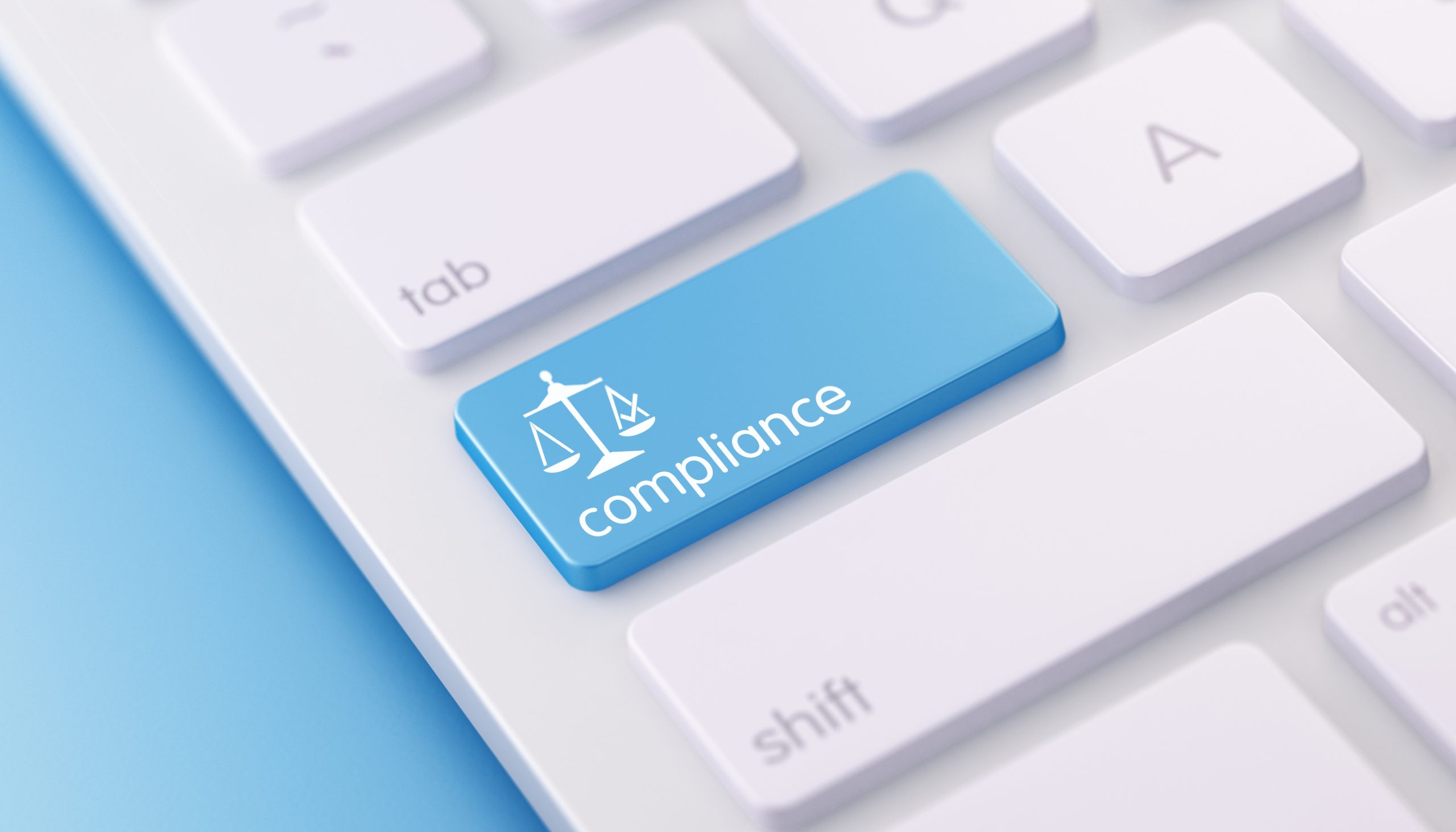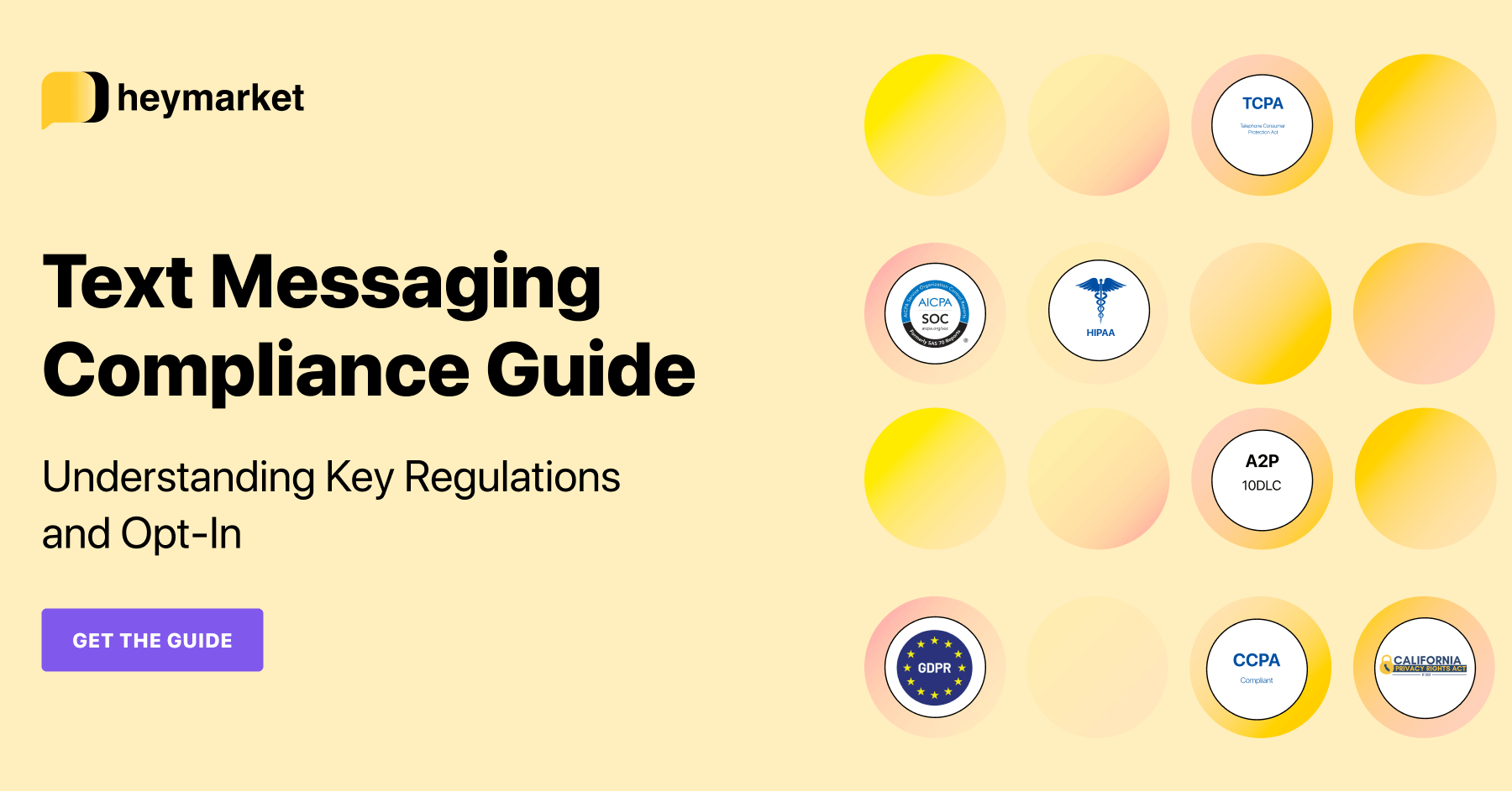
If you’re already using business text messaging to reach your customers or coordinate with your staff, you know all about SMS regulations. Compliance with these regulations is required by law, but it also helps your business create a positive customer experience. There are also new standards that aren’t quite laws, like SOC 2. SOC 2 compliance is an interesting topic for businesses, especially as there are two kinds of compliance—Type 1 and Type 2.
It’s important for business leaders to know what certain compliance badges mean. This knowledge can help you decide whether you want to partner with a certain company or use their services and products. That’s why we’ve created this quick guide to Type 1 and Type 2 SOC 2 compliance.
Let’s dive in.
For an in-depth look at complying with SOC 2 and other key texting regulations, check out our guide.
What Is SOC 2?
SOC 2 is a set of guidelines that outline how companies should set up and follow high-quality data privacy policies.
In technical terms, Service Organization Control 2 (SOC 2) is a standard released by the American Institute of Certified Public Accountants (AICPA). The AICPA regularly creates and releases data-related guidelines for all businesses—not just accounting or financial firms. These guidelines apply to data security, availability, confidentiality, privacy, and processing integrity.
Any business that manages or stores customer data should strive to meet SOC 2’s requirements, which call for the careful handling of customer data. First and foremost, SOC 2 compliance is a great way for internal leaders to be sure that their business is treating customer data responsibly. Additionally, customers and business partners want to ensure that companies are SOC 2-compliant before working with them. Otherwise, their data may be at risk.
Businesses have to partake in a regimented process with a third party to become SOC 2-compliant. Third-party organizations audit and evaluate the business. The auditor inspects and tests key processes, looking for evidence that the business is following specified procedures to protect customer data.
The length and thoroughness of this audit depends on whether a business submits to a Type 1 or Type 2 SOC 2 report. Once the report is complete, the auditor will make it available to any interested parties on request.
Why Is SOC 2 Important?
More businesses are working with customers online. This means that businesses are storing a large amount of customer information—like names, addresses, and credit card numbers—on the internet.
Storing this data is helpful for customers. They can order items without going into stores and even place orders without looking up their credit card information. But cybercriminals are constantly trying to access this data. Today, a cyberattack occurs about once every 39 seconds.
As a result, companies and customers expect vendors to have robust data privacy policies and procedures. Official certifications and third-party reports, like SOC 2, assure them that these policies are up to par.
Type 1 Reports
A Type 1 SOC 2 report provides a brief overview of a business’s data security performance. Effectively, it checks a business’s security policies at a specific point in time.
This report takes far less time for auditors to complete than a Type 2 report. It only describes a business’s security controls, such as how the business’s systems and stored data are protected against unauthorized access or disclosure. It also reviews the accuracy of the business’s description of its own controls.
However, the Type 1 SOC 2 report does not judge the business’s effectiveness at protecting customer data.
Type 2 Reports
A Type 2 SOC 2 report provides an in-depth look at a business’s data security performance. A Type 2 audit and report is completed over the course of three months.
Auditors spend their three months reviewing a business’s data security, availability, confidentiality, processing integrity, and privacy systems. They don’t just look at how the description of a business’s security lines up with the actual practices. They also examine whether the design of the controls is suitable and effective for the customer data that is collected.
In essence, Type 2 SOC 2 reports are far more robust than Type 1 reports.
Which Type of SOC 2 Compliance Is Better?
Your business might use SOC 2 reports to evaluate vendors or business partners.
The lack of an SOC 2 report, showing that the vendor hasn’t invested enough in data security, might exclude a vendor from consideration. If a vendor offers no SOC 2 report at all, you’ll know you might need to review their security protocols to ensure they have appropriate policies in place.
Type 1 SOC 2 compliance can show that a vendor does prioritize data security, but it’s only accurate for a specific point in time. Most businesses prefer to see Type 2 SOC 2 compliance in their vendors.
A positive Type 2 SOC 2 report demonstrates that a vendor is thoroughly committed to cyber security. It also shows that they’re monitoring and adjusting data security and policies over time. In this day and age, cybersecurity is a must-have for your vendors. Any business that might deal with your customers’ sensitive data needs to prove that it will protect it at all costs. This, in turn, protects your brand and your customers.
To learn more about complying with key business SMS regulations, read our Text Messaging Compliance Guide:






